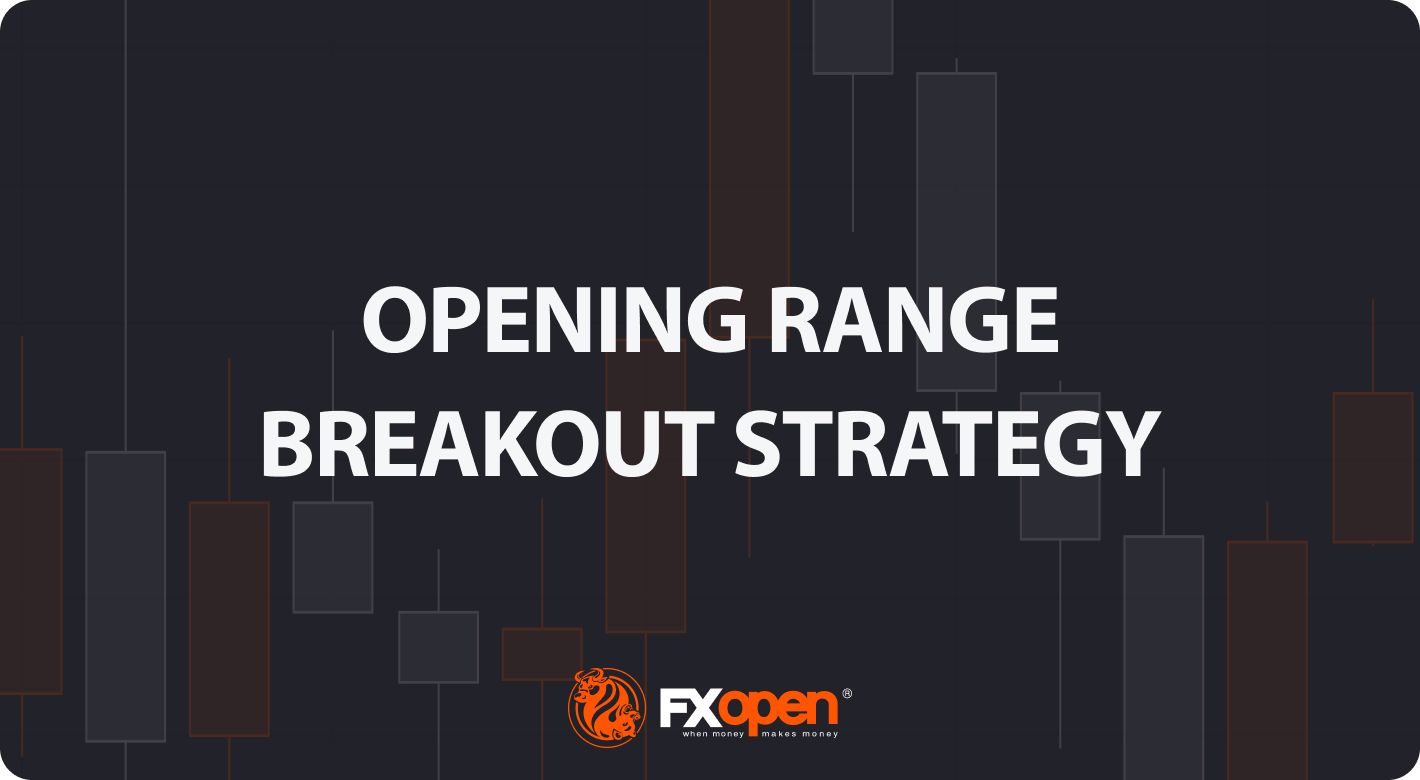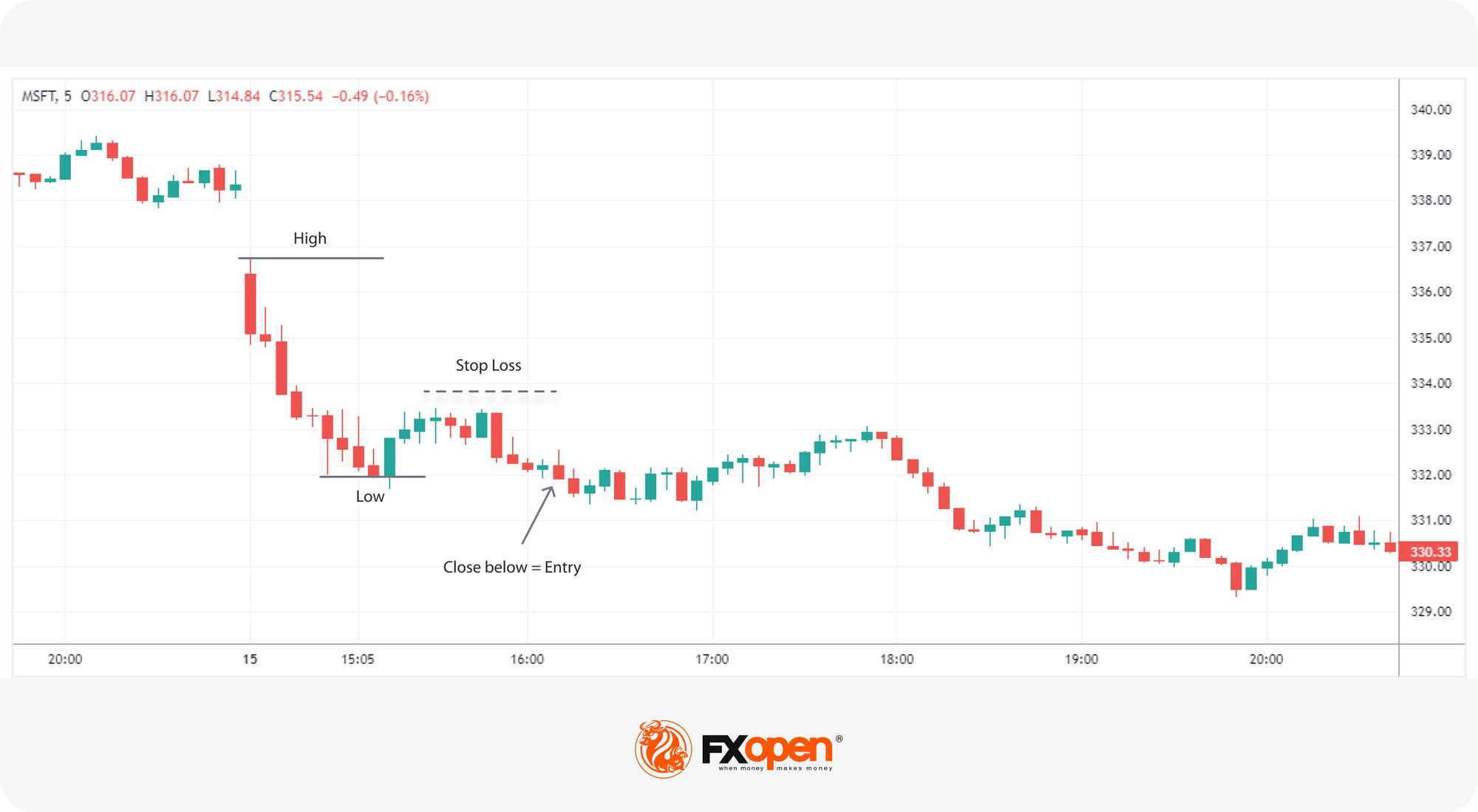FXOpen

The Opening Range Breakout (ORB) is a classic trading strategy designed to capitalise on volatility during the first few minutes following the market's opening bell. Rooted in principles laid down in the 1960s, the strategy remains relevant today for both stock and forex markets. This article dives deep into the ORB strategy and its application in these markets.
Overview of the Opening Range Breakout Trading Strategy
The ORB, or the Opening Range Breakout, is a tried-and-true approach in the world of trading that focuses on the price range established shortly after a market opens. Invented in the 1960s by American trader Arthur Merrill, this strategy has stood the test of time, with variations and adaptations made to suit modern trading environments.
ORB operates on the principle of monitoring price movements within a set time, typically the first 30 minutes after the market opens—common timeframes include 5, 15, and 30 minutes. The strategy zeroes in on the highest and lowest prices reached during this opening range. However, some traders will use the close of the previous trading day as their initial high or low.
Traders keen on trading the opening range breakout pay close attention to these high and low levels, as a breakout or breakdown from these levels can indicate a strong trend.
Using the ORB for Stocks
Trading the Opening Range Breakout in the stock market offers distinct advantages, primarily due to the well-defined opening and closing times of the stock exchanges. These regulated timeframes provide a clear structure for implementing the ORB strategy. Typically, stock traders focus on the initial 5 to 30 minutes post-opening bell to define the range, as this period often captures the essence of market sentiment.
Liquidity is usually high during this time, and volumes are significant, making it easier to enter and exit positions. The strategy is particularly effective in identifying trends early in the trading session. However, it's crucial for traders to also consider the current trend. Looking for entries in the broader trend direction can reduce the odds of being misled by a false breakout.
Using the ORB for Forex
In forex, the Opening Range strategy can also be effectively applied, albeit with some unique considerations. Unlike the stock market, forex operates 24 hours a day, five days a week, with no clearly defined opening or closing times. Despite this, traders can still focus on specific trading sessions—such as the London, New York, or Tokyo sessions—to define an opening range.
Liquidity and trading volume can vary substantially between these sessions, affecting a trader’s success when using the opening range breakout method. Additionally, it's essential to be mindful of currency pairs; each pair may have increased activity and, therefore, more reliable breakouts during the session of its originating country. Lastly, given the almost continuous trading, overnight gaps are rare, making a careful session-based approach critical for forex ORB.
Breakout Strategy

The opening breakout strategy is a widely used approach to capitalise on strong upward or downward movements that break the defined opening range.
To see how it works for yourself, you can head over to FXOpen’s free TickTrader platform. There, you’ll be able to explore a wide range of forex and stocks to test this strategy out.
Entry
- Traders often monitor the price as it approaches the high or low of the opening range, typically using the 5, 15, and 30-minute charts. The opening range is generally defined as the first 30 minutes of the session.
- Entry confirmation typically comes from a candle closing above the high for a bullish breakout or below the low for a bearish one.
Stop Loss
- A stop loss may be set just below the opening range high for bullish trades or above the low for bearish trades. Factors like market volatility and liquidity are often taken into consideration when placing the stop loss.
Take Profit
- The profit target may be set at a distance at a given risk/reward ratio, like 2:1 or 3:1, measured from the entry point to the stop loss.
- Consideration is usually given to major support or resistance levels that lie beyond the target, which could affect the trade's success.
Pullback Strategy
The pullback strategy within the ORB framework offers traders an alternative approach that seeks additional confirmation before initiating a trade. This strategy can be particularly useful in markets where false breakouts are common.
Entry
- Rather than entering immediately on a breakout, traders often wait for the price to break beyond the opening range and then retrace back to the high or low of that range or to a relevant support or resistance level within the range.
Stop Loss
- Stop losses are typically placed a few pips below the low of the range for bullish trades or a few pips above the high for bearish trades to accommodate market noise and volatility.
Take Profit
- Profit targets are commonly set based on a risk/reward ratio that aligns with the trader's overall strategy.
- These targets may also be adjusted depending on subsequent support or resistance levels.
The Bottom Line
The ORB strategy offers traders a robust framework for capturing significant price movements in both stock and forex markets. Whether opting for the traditional breakout method or the more cautious pullback strategy, understanding the nuances of each market can enhance the ORB's effectiveness. Interested in deploying this strategy? Consider opening an FXOpen account to access a wide selection of markets, rapid execution speeds, and competitive trading costs. Good luck!
This article represents the opinion of the Companies operating under the FXOpen brand only. It is not to be construed as an offer, solicitation, or recommendation with respect to products and services provided by the Companies operating under the FXOpen brand, nor is it to be considered financial advice.
Stay ahead of the market!
Subscribe now to our mailing list and receive the latest market news and insights delivered directly to your inbox.








